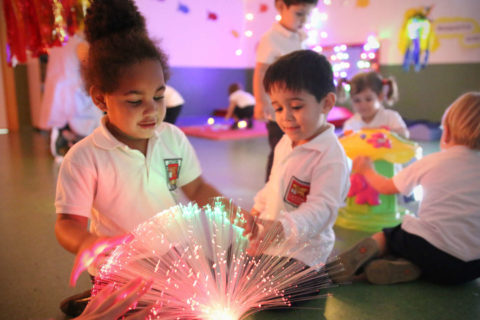In contrast to traditional educational models, new methodologies are appearing that are based on an education centred around creativity.
By Marta Gil, pedagogue and vice-principal at Caxton College, bilingual British school located in Valencia.
Creative people are not born, they are made. Even though we tend to associate the greatest geniuses with an inborn talent and not with personal effort, creativity is just another skill that can be developed if it is worked on properly in the classroom, from an early age. How, then, can we foster creativity in Primary schools? While it is true that there does not exist one single way of encouraging children’s creativity, it is important to take the following aspects into account:
1. Everyone is creative
One of the most common mistakes we make is to only consider as “creative” those activities which are related to the artistic fields, such as painting, music, poetry, and so on. However, every child possesses a talent and an activity which they enjoy and through which they can develop their imagination. The creative side can be encouraged at any age, but the earlier it is cultivated, the more possibilities there are to develop all of one’s creative abilities.
2. Make the most of multiple intelligences
According to the Theory of Multiple Intelligences, put forward by the American psychologist Howard Gardner, many types of intelligences exist, and to foster the development of all of them, students should be offered spaces with sufficient resources and varied stimuli, where each of them can discover and maximise their own way of learning.
3. Respect each child’s pace
In accordance with the Montessori method, created by the Italian educator and doctor Maria Montessori, teachers should respect each child’s pace in the classroom and personalise the classes according to their needs and their development, so that they can develop their own abilities and interests.
4. We always learn from our mistakes
To attempt something without achieving it is not to fail, it is how we learn. Therefore, we must help children to understand that what is important is not always the end result in itself, but rather the whole process and everything that they learned along the way.
5. Our surroundings influence creative thought
Classrooms and learning spaces have a direct impact on the development of the innovative thinker. One excellent idea is to divide the classroom into multiple teaching areas, each one focussed around a concrete learning objective.
6. Promote children’s independence through exploration and the learning process
Very young children are extremely curious to explore and discover their surroundings, which is why it is important to give them the autonomy and freedom to move from one area to another in the classroom. Thus, through creative play and the support of their teachers, they can acquire new skills and develop new ideas.

